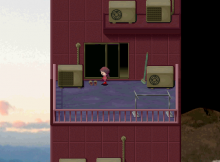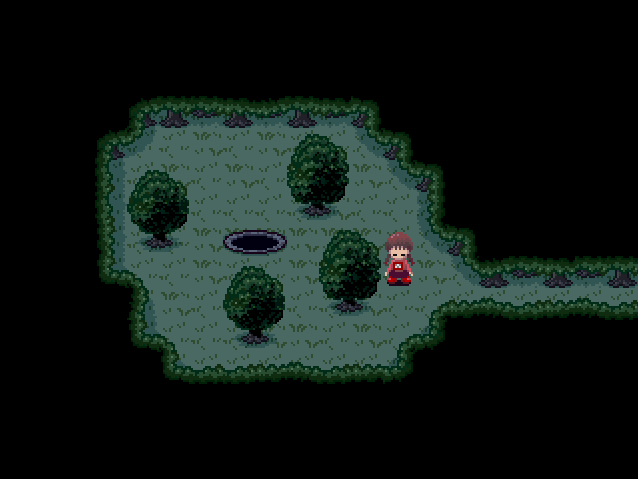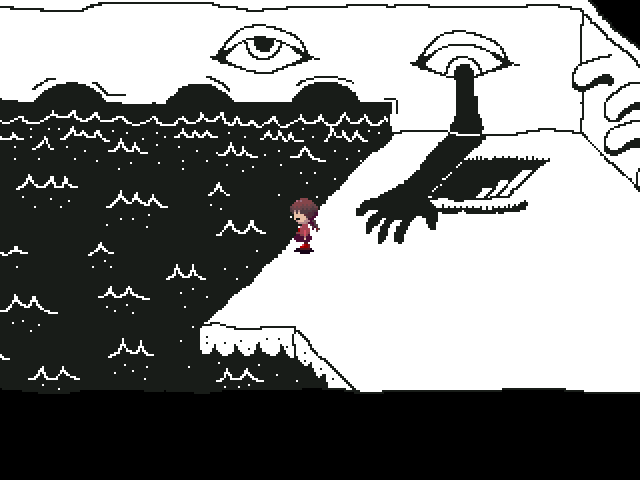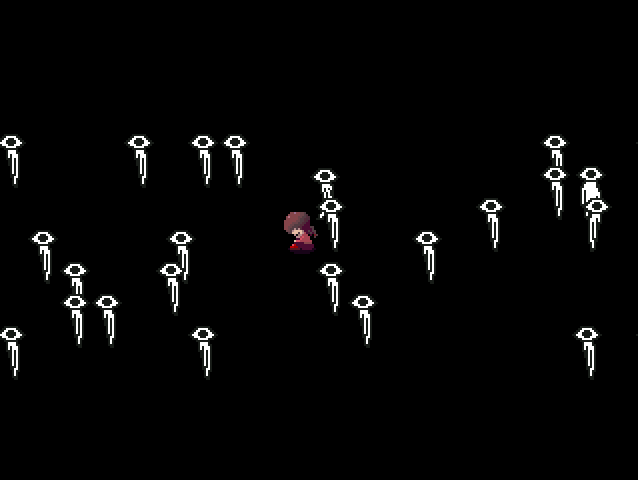Surreal and unyieldingly cryptic even after 14 years, the dream world of Yume Nikki has not lost its touch.
With the release of the modernized, side-scrolling 3D reboot YumeNikki -Dream Diary-, and the original being out on Steam 14 years after its initial release, it is appropriate to take a look at the original cult classic that once was at the forefront of RPG Maker horror games. So what is the 2004 game all about? Yume Nikki has the player controlling a young girl, Madotsuki, in her occasionally horror-tinged adventures through various dream worlds. The game could be described as sort of a twisted take on Alice’s Adventures in Wonderland, with some interpretations of Carroll’s book attributing the tale to Alice dreaming. The bulk of Yume Nikki is spent in the dream world, accessed by sleeping in Madotsuki’s bed. While refusing to exit the house when awake, Madotsuki does venture out of her room in the dream world. The dream worlds vary in style, atmosphere, and degree of surreality, often making use of the grainy and lo-fi aesthetic characteristic of the RPG Maker toolkit.
The game is quite uncompromising in its brand of weirdness – the player is not spoon-fed much information or a goal to guide them on their journey, save for a simple explanation of the dream mechanics. It is then time to plunge head-on into the myriad dreamscapes of the game. The core gameplay is what one would expect from a typical RPG Maker game: relatively simple exploration and interaction. The catch of the game lies in the layered structure of the dream worlds and in collecting the various “effects” found within. Effects are items that alter Madotsuki and/or the gameplay somehow, ranging from providing her with a bicycle to morphing her into a severed head. Using them opens up new paths in the game, enabling the player to access the more hard-to-reach dream worlds layered within the “first-level” ones.
The game features almost no dialogue; the story and the symbolism of the dream worlds along with their inhabitants are up to the player to piece together. In addition, the game is filled with various random events that have a chance of occurring should the player enter a certain area or perform specific actions there. Such events add some variation to the overall experience.
That is what Yume Nikki is at its most bare – an experience. Akin to the walking simulator genre in its slow pace, the game emphasizes atmosphere over all else. Much of its content comes off as nonsensical, fit for the dream world setting. The player will feel lost and disoriented amidst its looping environments, hypnotic soundtrack and seemingly aimless exploration.
Is it any good, then? It depends. Yume Nikki appeals to players willing to patiently explore its often monotonous environments thoroughly. It is by no means an easily approachable game, but for ones ready to immerse themselves in its strange world, it will be a journey worth remembering.
Platforms: PC
Developer: kikiyama
Publisher: AGM Playism
Release Date: 26 June 2004



